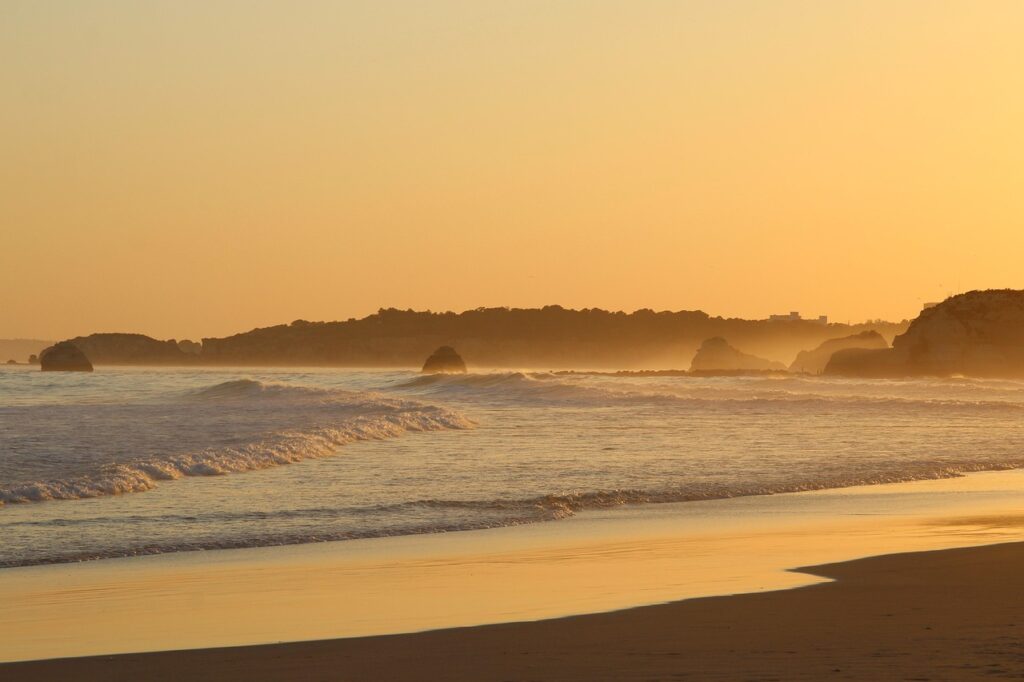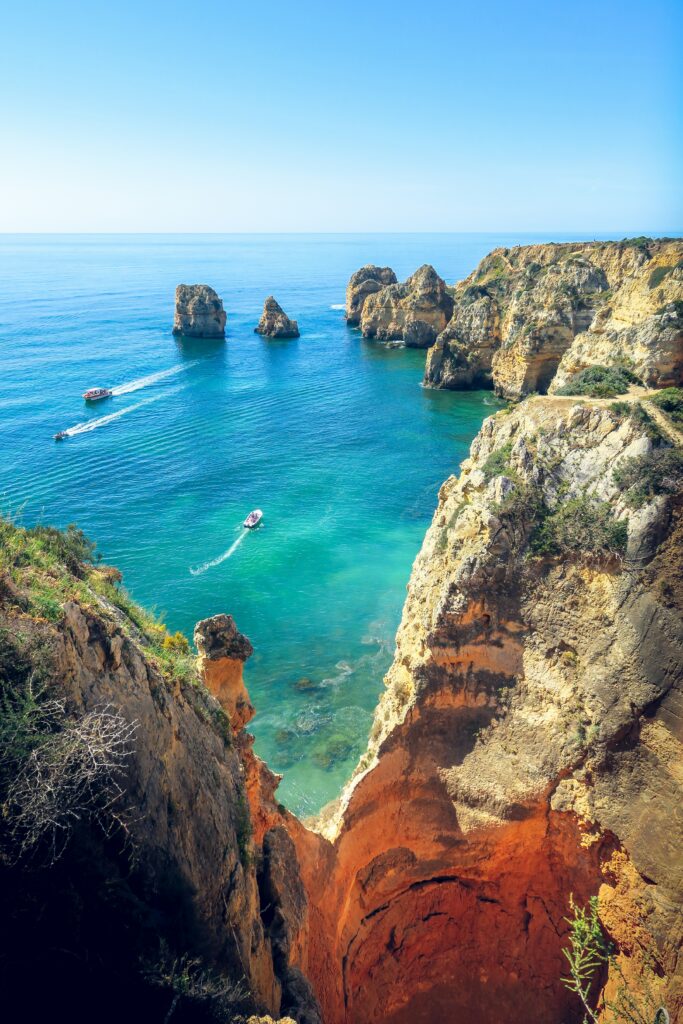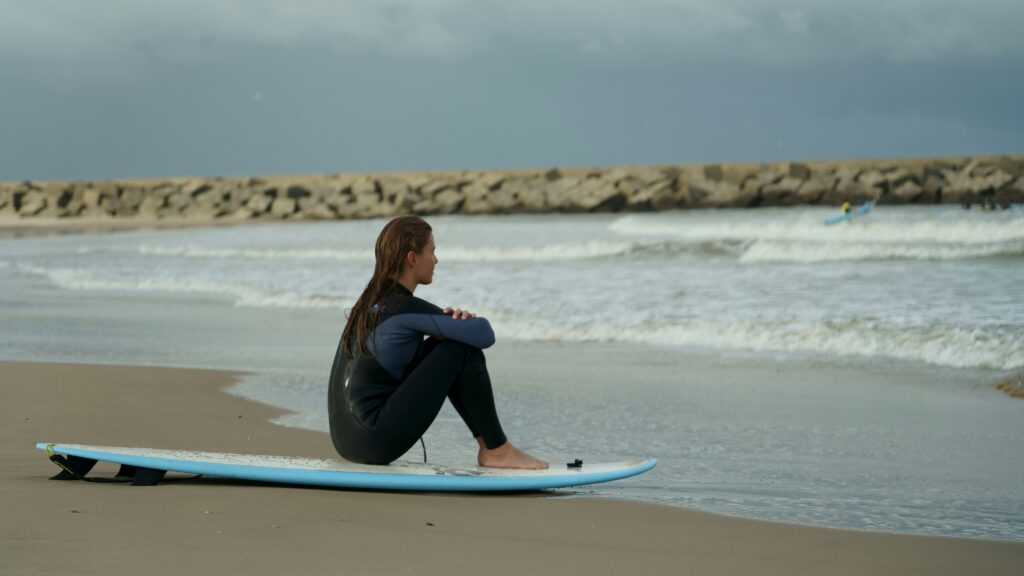The sea speaks in a language older than words—rhythmic, persistent, infinite in variation yet utterly consistent in its essential nature. Ebb and flow, build and release, the ceaseless conversation between water and shore that’s been happening since long before humans arrived to listen and will continue long after we’re gone. On the Greek islands, where you’re never more than a few kilometers from the sea, this voice becomes the background to everything—meditation bell, metronome, and reminder of patterns larger than any individual life.

Learning to listen to the sea—really listen, not just register it as pleasant background noise—is part of what yoga retreats in Greece offer, though it’s rarely named explicitly. The practice happens gradually. First days, you notice the sea consciously, comment on it, photograph it, appreciate it aesthetically. Then it starts to fade into background as you settle into routine. But somewhere around day four or five, if you’re actually present rather than just physically present, the sea’s voice becomes something else entirely—not background but ground, not noise but signal, not something you’re listening to but something you’re listening through.
The rhythm of waves—gentle lapping in calm conditions, rhythmic breaking when wind builds, dramatic crashing during storms—mirrors the rhythm of breath that yoga practice makes conscious. Inhale as a wave builds and rolls toward shore, exhale as it breaks and releases, the pause between waves like the pause between breaths. You can match your breathing to the sea’s rhythm, letting it guide pranayama, or you can simply notice the parallel—how both breath and waves are expressions of the same fundamental pattern, accumulation and release, tension and ease, the basic pulse of existence manifesting in water and air and the body breathing.

The Sea as Teacher of Impermanence
Nothing demonstrates impermanence more clearly than standing at the edge of the sea, watching waves appear, exist briefly in their particular form, and dissolve back into the water they came from. Each wave is unique—slightly different height, shape, timing—yet each is also utterly the same, just water temporarily organizing itself into wave-form before returning to its essential nature.
Buddhist teachers use waves to explain the relationship between individual identity and universal nature—we’re like waves on the ocean, appearing to be separate entities but actually just temporary expressions of the same water. The wave that crashes on a Greek beach right now has been through countless forms—rain in distant regions, rivers flowing to sea, evaporation and condensation, the endless cycling of water through its various states and locations. Your identity is similar—not a fixed thing but a temporary organization of elements that have been and will be countless other things.
This isn’t just philosophy. It’s visceral truth you can observe directly. The sandcastle children build this afternoon will be gone by tomorrow’s tide. The footprints you leave while walking the beach are erased within minutes. The patterns of foam and seaweed that seem so beautiful and particular disappear with the next set of waves. Nothing the sea touches remains unchanged; everything is constantly being rearranged, reformed, returned to essential elements for new configurations.
For those carrying grief, loss, or attachment to how things used to be or should be, the sea’s teaching on impermanence can be simultaneously painful and liberating. Painful because it confirms what part of you already knows—nothing lasts, everything changes, all things you love will eventually be lost or transformed beyond recognition. Liberating because if everything changes anyway, if nothing can be permanently held, then perhaps you can ease the exhausting grip of trying to control and preserve, and instead learn to love what’s here while it’s here, knowing its temporary nature makes it precious rather than diminished.
The Sea as Mirror of Emotional Weather
The Aegean and Ionian seas aren’t consistently calm postcard waters. They have moods, governed by wind and weather, ranging from mirror-flat stillness that reflects sky so perfectly you can barely distinguish water from air, to dramatic storm conditions with waves that crash violently against cliffs and make swimming impossible.
Spending time by the sea, you become intimate with these shifts. The morning calm when the water barely moves, inviting swimming and contemplation. The afternoon build when the Meltemi establishes itself and the sea transforms from placid to choppy, white caps appearing, waves gaining force and regularity. The occasional storm when the water turns dark and wild, when you understand why ancient Greeks imagined Poseidon’s anger when looking at turbulent seas.

These changes happen independently of your preferences or plans. You might want to swim, but the sea is too rough. You might hope for dramatic waves, but the water is flat. The sea doesn’t care what you want—it responds to forces far larger than individual human desires. Wind, atmospheric pressure, underwater currents, the gravitational pull of the moon—these determine the sea’s condition, not your wishes.
This provides practice in accepting what is rather than demanding what should be. You can’t argue the sea into calmness or stir it to motion through force of will. You can only observe, adapt, work with conditions as they are. Want to swim but the water’s too rough? You go at a different time or you don’t swim today. Hoped for dramatic waves but the sea is calm? You enjoy the calmness for what it offers rather than mourning the absence of what isn’t there.
The parallel to emotional weather is obvious. You have inner states you can’t entirely control—days when anxiety rises like a storm regardless of circumstances, periods of inexplicable sadness, waves of anger or joy that emerge from depths you don’t fully understand. Fighting these states, demanding they be different, insisting you should be able to control your inner weather through effort or technique—this is as futile as shouting at the sea to calm itself. Better to observe, to accept, to work skillfully with whatever conditions are present, knowing that like all weather, emotional states shift and change without requiring your force or resistance.
Swimming as Meditation: Immersion and Surrender
Swimming in the Greek seas—whether the Aegean or Ionian—offers a particular quality of embodied meditation that happens almost automatically if you allow it. The water is clear enough that you can see the bottom meters below, creating the sensation of flying or floating in three-dimensional space rather than moving across a two-dimensional surface. The salt content makes you more buoyant, requiring less effort to stay afloat, encouraging relaxation rather than the constant vigilance freshwater swimming demands.
The temperature matters too. Not bath-warm, which would be enervating, but refreshing coolness that wakes the body, heightens sensation, demands presence. When you first enter, there’s the gasp of adjustment—the water feels cold, your skin contracts, you have to breathe deliberately through the shock. Then, if you stay, your body accommodates. The temperature that felt cold becomes comfortable, even pleasant. You relax into it, and the swimming itself becomes meditation.
The rhythmic movement—stroke, breathe, stroke, breathe—creates a natural anchor for attention similar to watching breath in seated meditation. But unlike sitting still, where the body can become restless or uncomfortable, swimming gives the body something to do, engaging it fully while freeing the mind to settle. Thoughts might still arise, but they have less grab when you’re moving through water, matching your rhythm to breath, feeling your body’s strength and capability, immersed in sensation and movement.
Long swims in calm conditions create particular states of absorption. Time becomes elastic—you might swim for an hour that feels like twenty minutes, or ten minutes that feel like an hour. Space becomes ambiguous—how far have you swum? How far back to shore? Distance is hard to judge over water. All your normal reference points dissolve, leaving just the immediate experience: water, movement, breath, the play of light on and through water, the sensation of being held, the surprising comfort of total immersion.
There’s also the element of surrender that swimming requires. You’re not controlling the water; you’re moving through it, with it, sometimes against it but never dominating it. The water is infinitely stronger than you, capable of drowning you without effort if you fight it or panic. Safety comes through relaxation, through trusting your body’s buoyancy, through working cooperatively with the element rather than trying to master it. This is ishvara pranidhana—surrender to something larger than yourself—practiced in the most literal, physical way.
The Soundscape of Presence
The acoustic environment of Greek coastal areas differs dramatically from inland or urban spaces. The sea provides constant background—not uniform white noise but endlessly varied sound depending on conditions, time of day, and where you’re positioned relative to shore.
Early morning, before wind builds, the sea might be nearly silent—just the gentlest lapping, the occasional small wave breaking, a quality of liquid quiet that’s not quite silence but something softer than stillness. This is the sound of potential, of energy gathering before it expresses.
Midday and afternoon, as the Meltemi establishes itself, the soundscape becomes more vigorous—waves breaking with greater force and regularity, the whoosh of water pulling back over pebbles or sand, the more aggressive sound of water meeting resistant shore. This is the sound of activity, of engagement, of the world fully manifesting its aliveness.
Evening, as winds ease, the sea’s voice softens again but differently than morning—this is tiredness rather than potential, release after effort rather than gathering before action. The waves continue but without the afternoon’s insistence, with a quality of settling, of transitioning toward night’s different rhythm.
Night brings yet another soundscape—the sea often calmer in darkness, the sound more intimate without visual distraction, waves breaking in patterns your ears track in three dimensions, creating space and location through sound alone. Many people report that the sea’s voice at night, when lying in bed or sitting in darkness, becomes profoundly meditative—the combination of rhythmic sound, visual absence, and the particular quality of night consciousness creating conditions for deep letting go.
This acoustic environment functions as constant meditation support, a natural sound bath that requires no app or playlist. Your nervous system entrains to the rhythm without effort, your breathing unconsciously matches the wave patterns, your mental activity gradually attunes to the sea’s frequency—present, persistent, endlessly patient.
Air and Breath: The Element Between
The air near the Greek sea carries qualities you don’t find inland—salt, minerals, ozone, a certain density that comes from moisture held in suspension, a freshness that seems to clean your lungs with each breath. Breathing this air, particularly during pranayama practice near the sea, you’re taking in more than oxygen—you’re ingesting the sea’s essence in aerosol form, allowing it into your body at the most intimate level.
Ancient Greeks understood that pneuma—breath, spirit, life force—wasn’t just metabolic air exchange but something more essential, the animating principle that distinguishes living from dead matter. Practicing pranayama by the sea, you experientially understand this. The breath carries not just oxygen but quality, character, essence. Breathing sea air is different than breathing mountain air or city air or indoor air—not just in measurable chemical composition but in how it feels, what it carries, how it affects consciousness.
The wind—whether gentle breeze or strong Meltemi—provides constant reminder that breath is not just internal but a participation in larger atmospheric movements. The air you’re breathing has traveled across seas, over lands, carrying traces of everywhere it’s been. Your exhales join the wind, become part of weather systems, move on to become someone else’s inhales. The boundary between inside and outside breath dissolves somewhat when you really pay attention to this—you’re not separate from the atmosphere but a temporary eddy in it, pulling in air, extracting what you need, releasing what you don’t, then allowing it to continue its journey.
Balance: The Sea’s Essential Teaching
Ultimately, what the sea teaches most persistently is balance—not as static equilibrium but as dynamic process, as constant adjustment in response to changing forces. The sea is never perfectly still (even apparent calmness contains subtle movement) and never chaotically random (even storms follow patterns, respond to forces, demonstrate order within apparent disorder).
This dynamic balance between too much and too little, between rigid and chaotic, between controlling and surrendering—this is what yoga practices aim to cultivate. The Aristotelian golden mean, the Buddhist middle path, the yogic concept of sthira sukham asanam (steadiness and ease)—all point toward this quality of balanced engagement that the sea demonstrates hour after hour, day after day, year after year.
You can’t push the sea and you can’t ignore it. You have to work with it—respecting its power while trusting your capacity, adjusting to conditions while maintaining your essential trajectory, being flexible enough to respond but steady enough not to be overwhelmed. This is the practice that swimming, sailing, even just sitting by the sea watching waves, naturally teaches.
On a yoga retreat by the Greek sea, this teaching doesn’t happen through instruction but through osmosis, through the constant presence of something that embodies the very qualities practice aims to develop. You don’t have to try to learn from the sea—you just have to be present with it, let it demonstrate, allow your nervous system to entrain, your consciousness to absorb what’s being shown.
The Return to Shore
Every swim ends with return to shore, every day by the sea ends with going inland, every retreat eventually leads to departure. The question is always what you carry with you, what changes when the immediate presence of the sea is no longer providing constant reminder and support.
You can’t take the sea with you, obviously. But you can carry what it taught—the rhythm of waves mirrored in breath, the acceptance of impermanence witnessed in every moment of change, the practice of dynamic balance observed in how water responds to wind and shore. These aren’t abstract lessons but embodied knowledge, things your nervous system learned through immersion and observation.
When you’re back in landlocked life, far from any ocean, you can close your eyes and remember the sound of waves. You can match your breathing to that remembered rhythm. You can recall the feeling of salt water holding you, of surrendering to buoyancy rather than fighting to stay afloat. You can remember watching waves arise and dissolve, each unique and each essentially the same, and recognize this same pattern in the thoughts and emotions and circumstances that arise and dissolve in your daily life.
The sea becomes internalized not as memory exactly but as template, as reference point, as reminder of rhythms and patterns larger than personal drama and daily stress. When life feels chaotic, you remember how even storms have patterns. When life feels stagnant, you remember that apparent stillness contains subtle movement. When life demands too much, you remember the tide going out, the necessary rhythm of release after accumulation. When life feels meaningless, you remember the sea’s infinite patience, how it continues its essential work regardless of anyone witnessing or understanding.
The Greek sea doesn’t require belief or interpretation. It simply is—utterly present, utterly itself, inviting you to share that quality of pure being without agenda or striving. And in that invitation, accepted through however many days or weeks you spend on its shores, lies the possibility of remembering what you are beneath all the stories and identities and anxieties: consciousness temporarily organized into individual form, like a wave on the ocean, destined to eventually dissolve back into the source but fully, magnificently alive right now, in this particular form, riding this particular moment between vast depths and infinite sky.






